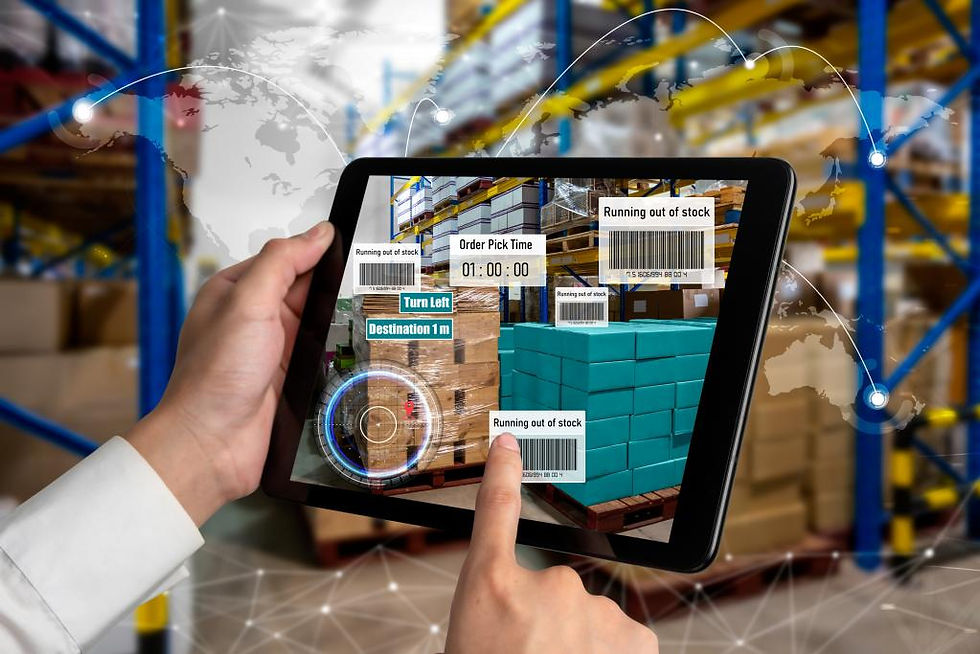US Tariff Hikes and Their Impact on the Supply Chain How Automation Can Help Businesses Adapt
- Cinnex Resources

- May 21
- 5 min read

Recent developments around US tariffs have sent ripples through international supply chains in an increasingly volatile global trade environment. For small and medium-sized enterprises (SMEs) that rely on importing goods or raw materials, these tariffs can significantly affect cost structures, pricing strategies, and, ultimately, profitability.
As companies navigate this shifting terrain, the question becomes: how can businesses respond quickly and effectively to such external shocks? The answer, increasingly, lies in automation and digital supply chain solutions, a domain where companies like Cinnex play a pivotal role.
What Are US Tariffs, and Why Are They Rising?
US tariffs are taxes imposed on imported goods, usually to protect domestic industries or address trade imbalances. In recent years, the US has reintroduced or raised tariffs on goods from several countries, especially China, as part of broader economic and political strategies.
In 2024 and early 2025, new waves of tariffs have been implemented on a range of goods, including electronics, machinery, chemicals, and consumer products. These measures are often justified by the US government as necessary to protect domestic manufacturing or respond to unfair trade practices. However, for many businesses globally, including those in Southeast Asia and Indonesia, the impact is disruptive.
How US Tariffs Disrupt the Supply Chain
For companies dependent on exporting to or importing from the US, increased tariffs can have far-reaching consequences that go beyond immediate cost increases. These disruptions affect multiple layers of the supply chain, from sourcing and procurement to production and customer fulfillment.
Increased Landed Costs
Tariffs add a direct surcharge to the cost of goods entering the US market, which increases the landed cost, the total price of a product once it has arrived at a buyer's doorstep, including freight, insurance, and duties. For companies operating on thin margins, especially SMEs, this added cost can significantly affect profitability and pricing competitiveness. In many cases, businesses are forced to make the difficult decision of either absorbing the cost or passing it onto consumers, potentially reducing demand.
Forced Sourcing Changes
Not all suppliers or countries are affected equally by tariffs. For instance, a component sourced from China may suddenly become too expensive due to a new round of tariffs, while the same component from Vietnam may remain unaffected. Businesses are often forced to pivot quickly, reevaluating their supplier networks and making hasty sourcing decisions that may not always be optimal in terms of quality or lead time. This reactive sourcing increases complexity and can introduce risks related to supplier reliability, certification, and regulatory compliance.
Delayed Delivery Times
Tariff changes often result in customs slowdowns, as authorities implement new documentation requirements or inspect goods more rigorously. These delays can ripple through the entire supply chain, affecting just-in-time inventory systems, delaying customer shipments, and damaging brand reputation. Additionally, when companies are scrambling to switch suppliers or reroute logistics, unforeseen disruptions and bottlenecks are almost inevitable.
Demand Volatility
As businesses adjust prices in response to rising costs, consumers react. Higher end-product prices may reduce demand, particularly in price-sensitive markets. In some industries, buyers may delay purchases, seek alternative products, or shift to competitors that have managed to keep prices stable. This volatility makes demand forecasting more challenging and adds pressure on operational planning.
The Specific Challenge for SMEs in Indonesia and Asia
For small and medium-sized businesses in Indonesia and the broader Asian region, these disruptions are particularly difficult to navigate. Unlike larger corporations, SMEs typically do not have the financial buffers, diverse supplier networks, or in-house legal and compliance teams to react quickly to sudden regulatory changes like US tariffs. Many are heavily reliant on a narrow range of suppliers or trade routes, which magnifies the impact of tariffs.
To remain competitive, these businesses must strike a delicate balance: maintaining product affordability for international buyers while preserving their margins. This requires not just cost-cutting, but smarter, more agile operations, and increasingly, this means investing in digital tools and automation platforms that enable real-time decision-making and operational efficiency.
Solutions like those provided by Cinnex can help SMEs mitigate these risks by enhancing supply chain visibility, optimizing sourcing strategies, and automating key processes that reduce human error and increase responsiveness. In today’s unpredictable trade environment, these capabilities are not a luxury, they are essential for survival and growth.
The Role of Automation in Adapting to Tariff Shocks
Amid such volatility, one of the key ways businesses can maintain agility and efficiency is through supply chain automation. This is where Cinnex, a company specializing in digitalizing supply chain operations, becomes relevant.
Real-Time Visibility and Risk Assessment
Automation tools offered by Cinnex can give businesses real-time insights into:
Where their products are sourced from.
What tariff classifications apply to each item.
Which alternative suppliers may offer lower-risk trade routes.
Having access to this information quickly can be the difference between sustaining profit margins and absorbing devastating losses.
Automated Sourcing and Procurement
When tariffs rise suddenly, businesses often scramble to find alternative suppliers. Cinnex’s AI-supported systems can:
Suggest alternative sourcing options based on cost, location, and risk factors.
Automate procurement processes to reduce response time.
Enable faster negotiation and onboarding with new suppliers.
This is especially vital for SMEs who may not have large procurement teams.
Cost Optimization Through Smart Inventory Management
Tariff hikes often lead to price hikes downstream. Cinnex provides smart inventory management tools that allow businesses to:
Forecast demand accurately.
Avoid over-ordering costly goods.
Rebalance inventory in response to shifting supplier costs.
By reducing excess stock and holding costs, businesses can buffer against tariff-driven price spikes.
Case Example: An Indonesian SME Navigates US Tariff Changes
Imagine a mid-sized Indonesian electronics exporter whose components are sourced from both China and Vietnam. With the latest US tariff increases on Chinese components, their manufacturing costs spike.
Using Cinnex:
They are alerted immediately to the tariff changes.
The platform suggests rerouting sourcing to Vietnam or Malaysia.
New procurement contracts are initiated through the platform.
Inventory levels are rebalanced based on new delivery schedules.
The result: minimal downtime, cost increases absorbed efficiently, and continued supply to US customers with competitive pricing.
Long-Term Strategy: Building a Resilient, Automated Supply Chain
US tariffs are not a one-time disruption; they are part of a broader pattern of geopolitical economic realignment. Businesses need to future-proof themselves against similar events. Cinnex supports this by:
Centralizing data for better scenario planning.
Standardizing workflows across sourcing, logistics, and fulfillment.
Using AI to simulate cost and lead-time impacts of policy changes.
With automation, even SMEs can gain the kind of agility and insight once reserved for large enterprises.
As the global trade environment continues to shift, particularly with new US tariffs on the horizon, the ability to adapt quickly will determine which businesses thrive and which fall behind. While tariffs are an external factor out of a company’s control, internal operational efficiency is not.
Through solutions like those provided by Cinnex, companies can respond proactively to global policy shifts, safeguard their margins, and continue to grow despite the odds. In a world of uncertainty, automation isn’t just an upgrade, it’s a necessity.




Comments